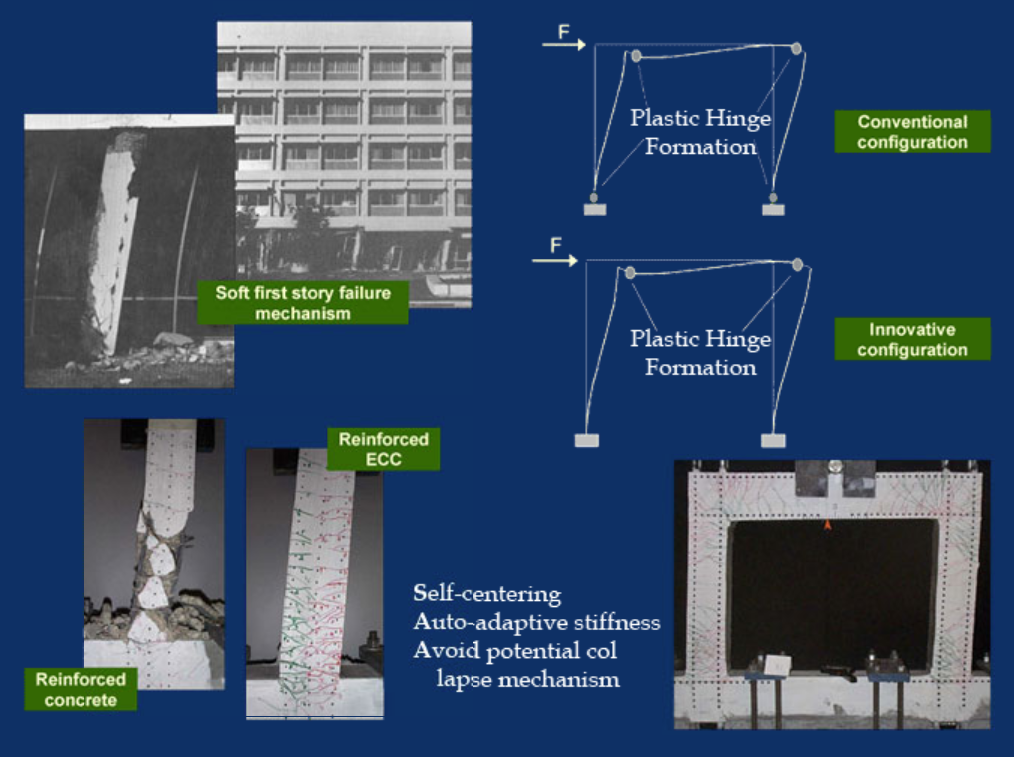Inventors: G. Fischer and V.C. Li
US Patent No. 6,662,506
Issued on December 16, 2003

Suggested Key Words: seismic resistance, plastic hinge, composites, auto-adaptive frame
Non-Proprietary Description: This invention offers a moment resisting frame system with intrinsic collapse prevention capabilities and auto-adaptive response characteristics. The implementation of this system is expected to significantly reduce construction cost as well as life-cycle cost of building structures and infrastructure facilities.
The invention alters the deformation characteristics of moment resisting frames and introduces a fundamentally different deformation mechanism. The conflict between providing sufficient deformation capacity and formation of a kinematic mechanism is resolved. Particular problems in seismic resistant design of buildings and infrastructure, such as soft first story mechanism and plastification of bridge piers, can be eliminated.
The issue of providing large deformation capacity but preventing structural damage has been the target of various inventions, utilizing mechanical devices for base isolation and active response control of structural systems. These solutions are expensive and require large maintenance efforts.
The present invention utilizes engineered materials, which are processed and installed with common construction methods in regular structural shapes.
The combination of fiber-reinforced cement composites and particular reinforcement materials leads to a moment resisting frame configuration with quasi-elastic load-deformation behavior, while still providing sufficient energy absorption capacity. Inelastic deformation and damage is occurring exclusively in the beam elements. Column elements maintain their lateral and vertical load-carrying capacity even after large deformations and repair are unnecessary. Furthermore, the need for transverse reinforcement in beam and column members is eliminated.
The proposed concept has been experimentally verified and is currently in preparation for large-scale testing.
